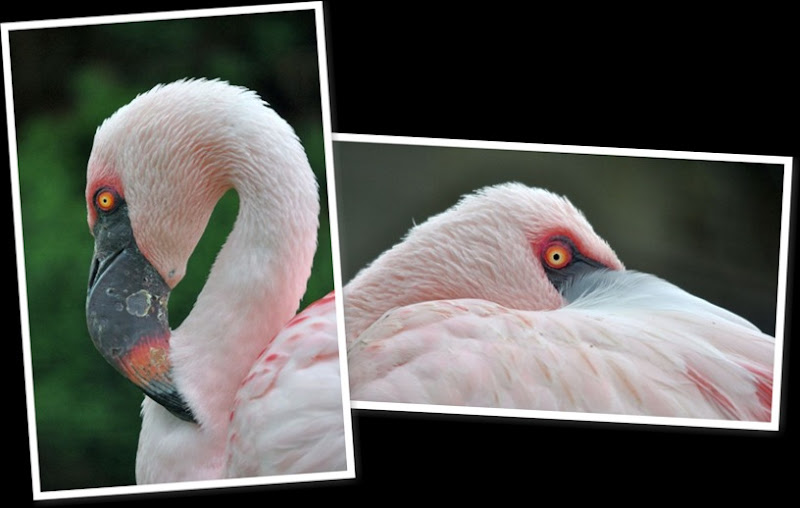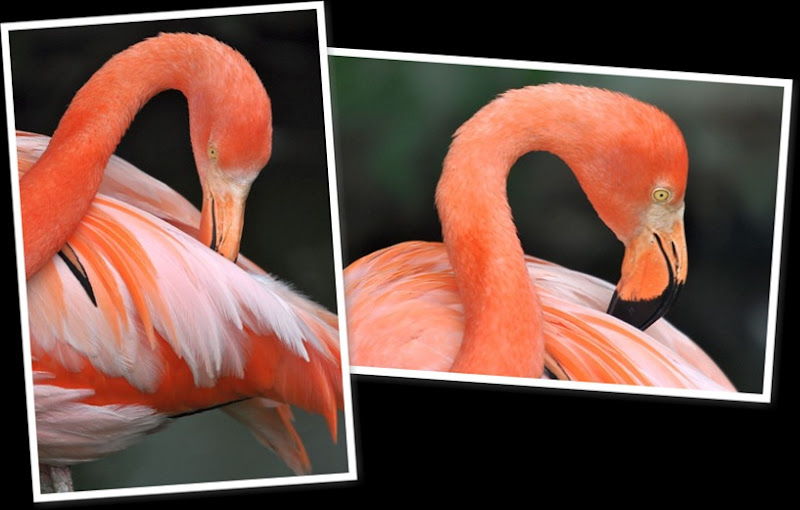Wednesday 27 June 2012
Nature's artistic brush strokes of beauty
We often share images of the Chilean Flamingos (Phoenicopterus chilensis) with our blog readers – mainly because they breed so successfully here at the Park. It’s fascinating to watch their cycle of life, from nest building, egg laying, hatching and rearing of their chicks – to the gradual changing colours of their magnificent plumage as they mature.
Our our other two species of Flamingos - Caribbean and Lesser – are equally beautiful. I captured a couple of images of both species earlier this afternoon:
The Lesser Flamingo (Phoenicopterus minor) – with eyes that look like magical kaleidoscopes! This is the smallest of the world’s six species of Flamingo, found in salty lakes and lagoons of southern Africa where it feeds mainly only blue and green algae. The Lesser is listed with IUCN as near threatened. Although not widespread some colonies contain over 1 million birds - these are among the largest bird aggregations in the world.
The Caribbean Flamingo (Phoenicopterus ruber), also known as the Rosy Flamingo, is found in the Caribbean, Yucatan Peninsula and Galapagos Islands. It has the brightest plumage of all the Flamingo species. The characteristic pink colouring is caused by beta carotene in their diet - they feed on insects, worms, vegetation and algae.
Subscribe to:
Post Comments (Atom)








No comments:
Post a Comment